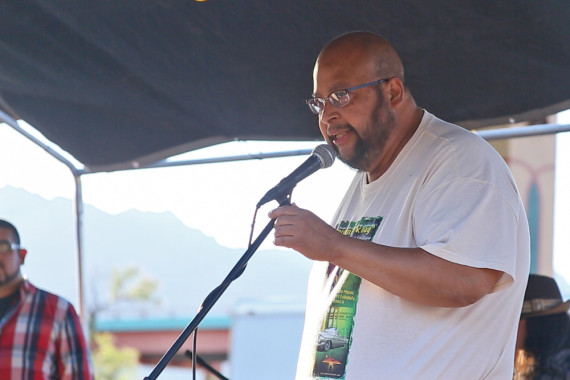Located under the Spaghetti Bowl is a community that finds pride in its location and in its histo-ry. Most of that community cares about the future of the Lincoln Center, but more importantly about the history the building represents.
Amidst efforts to demolish the building, community members have united together in the idea that the center ought to be considered a cultural treasure.
The building’s history traces back to the early 1900s, when Fort Bliss soldiers used the quarters as an office. It was also used as a school for Mexican-American and African-American children. In a city that is roughly 88 percent Mexican-American, such history ought to be preserved.
However, if the history and cultural significance are not reason enough, then the thought of the destruction of a community ought to bring attention.
The Texas Department of Transportation (TxDOT) plans to build a connecting ramp between Interstate 10 and U.S. Highway 54. They have elected to tear down the center to make way for the ramp if the city or the Lincoln Center Conservation Committee cannot find a government sponsor.
If you visit the Lincoln Park area, you will notice that murals of Ruben Salazar, Cesar Chavez, Martin Luther King Jr. and the Virgin of Guadalupe are painted on the pillars that hold the road above them. If TxDOT were to erect a ramp, it is possible that those pillars and that space would be removed to make room for construction efforts.
Residents, who remained living in the Lincoln area during and after the construction of the inter-state in the late 1960s, will once again experience the noise and possible relocation if the state agency decides that it will destroy the building.
Currently, it’s popular to destroy and rebuild in El Paso. River Oaks Properties has already be-gun tearing down buildings that have been a part of El Paso’s history since the development of downtown.
What is to be said if this trend continues? Is it logical to destroy historical buildings in the name of progress? Disregarding River Oaks, is it morally okay for a government entity to disregard the people?
Even though TxDOT owns the property where the Lincoln Center is located, it is not a private company. The agency, as a government entity, is supposed to be designed to work for the people, not the other way around.
It is a question of whether state government is overstepping its bounds.
It is also valid to point out that TxDOT suggested that “flying cars” were an issue of concern for the area, and pointed out the accident that included two road construction workers, who were working near UTEP and were hit by a car, as an example.
The community that lives near the Lincoln Center quickly retaliated and asked “when was the last time a car flew over the area?”
Despite protests from Lincoln Center preservationists, the chair of TxDOT, Ted Houghton, ex-plained that there was not enough “heat in hell” to keep the agency from their goal.
The lack of empathy from the agency has only further alienated the community that lives near the center from considering its propositions.
The Lincoln Center situation highlights the reality that if the local or state governments wanted to, they could more than likely use your neighborhood for a project whether you protested or not.
Aaron Montes may be reached at [email protected]













armie herrera • Jun 11, 2014 at 1:34 PM
i’ll keep on asking this..if they are so concerned about residents living in the area..about instances with “flying cars”..why was this not thought of before the freeway was constructed? hopefully all turns out well..and look into a cultural center….dios los bendiga!!!!!!!!!!!